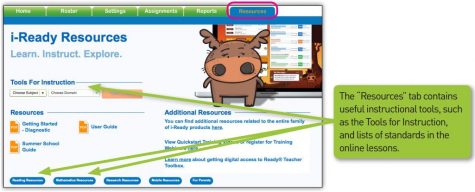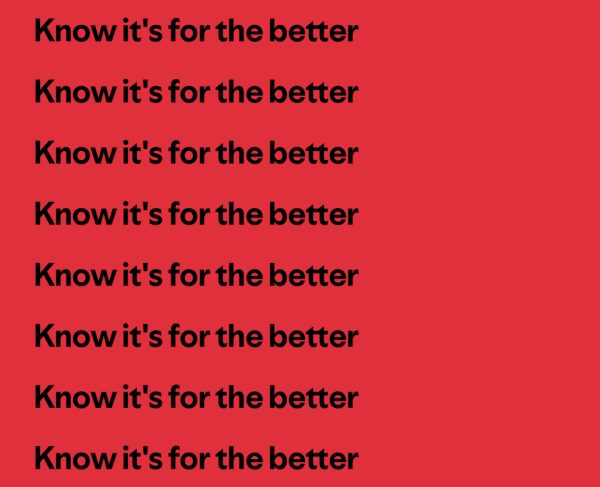iReady is introduced in Glendale schools
Students and staff react with mixed feelings
With last year’s announcement of the new Common Core standardized testing being implemented in schools nationwide and the revised SAT set to be administered in the spring of 2016, it finally seemed as though no other changes were to be made in testing. Glendale students were in for a surprise, however, as the new school year brought yet another mandatory test, the iReady diagnostic test.
As an intervention tool, Curriculum Associates’ iReady provides a diagnostic assessment to identify students’ weaknesses, then addresses these weaknesses by providing assistance with teacher-led instruction, student-driven online instruction, mobile applications and progress reports; however, much of the remediation it provides is available only for students in kindergarten through the eighth grade.
The iReady diagnostic is a computerized test that adapts to the individual student. If a student answers a question correctly, the student is given a harder question to answer, and if a student answers a question incorrectly, the student is given an easier question. Students in the Glendale Unified School District took the iReady assessment once this fall and will take it again in January and a final time at the end of the school year, if the District follows through with its original plan to test all students three times per year.
GUSD became a research partner with Curriculum Associates this year, the creator of i-Ready, when the GUSD signed a five-year contract that allowed for a 40% discount off the program’s face value, totalling to a price of $3.4 million, which is to be funded by Common Core State Standards, Title I and Local Control Funding Formula (LCFF) monies.

Many teachers appreciate the remediation tool, but they are also experiencing some hesitation. “My only concern with iReady is the amount of time it is taking away from instruction,” said Fred Blattner, an AP Statistics and Geometry teacher. He explained that the first administration of the test took two full class periods from his AP Statistics class. “That means I am surrendering six full class periods a year, which is a lot. Thankfully, Ms. Kortoshian and the rest of the administration did as much as they could to have the test impact the classroom as little as possible.”
“The test might be worth the time if the data we get back is meaningful and can inform our instruction. It is something that actually could be a huge plus,” Blattner said. He said that teachers get the data back instantly and adapt their curriculum to strengthen students’ weaknesses that were identified by the test.
Other teachers had similar thoughts about the new test. English teacher Carol Pettegrew said that although she thought the test was well designed and had good questions, it was too much of a burden on both students and teachers, as the students did not understand why they had to take the test and teachers were preoccupied with changing their curriculum to fit Common Core standards.
“The data that it is supposed to provide seems like it would be very useful, but right now with the new Common Core testing and the new curriculum that comes with it, I do not even know if I have time to really look the data over and figure out how I would be able to use it,” Pettegrew said. “If it was a different year where I wasn’t incorporating a new style of teaching, I would be all over it, and I would be very excited about it. I do think the test is valid. I do think it will be helpful. I just think that the timing is unfortunate.”
Students have had mixed feelings about the test. Freshman Samantha Dominguez said she liked the test because “it adjusted to how well [students] were doing while it was being taken.” Freshman Sevada Ghazaryan agreed that “it was pretty cool” but said, “I took my time and did my best, but I doubt a lot of people took it seriously.”
Junior Nanar Asadourian also said that she does not believe many people completed the test to the best of their abilities, as many students chose random answers just to get the test over with. Furthermore, Asadourian said that she preferred the math section to the English one. “Math was easier for me since the questions were not as open-ended as the ones in the English section,” Asadourian said.
On the other hand, sophomore Andrea Bernardo said she found the iReady “pointless and time consuming” and that she liked the CST better. She said one of the main reasons she did not like the test was that the iReady was administered on a computer, and consequently did not allow her to see how many questions she had already completed and how many she had left. “I liked the CST because it was on paper. I was able to skip difficult questions, then go back to them,” Bernardo said. “The iReady was practically never ending.”
However, not all students had such negative opinions about the test. Asadourian said that although she felt intimidated at first, she understands the test’s purpose. “It is not something we are used to. It is complicated and different. The questions given are not simple ones that you can answer quickly; you actually have to think critically before answering,” she said. “I had some trouble with the test at first, but then I got used to it.”








